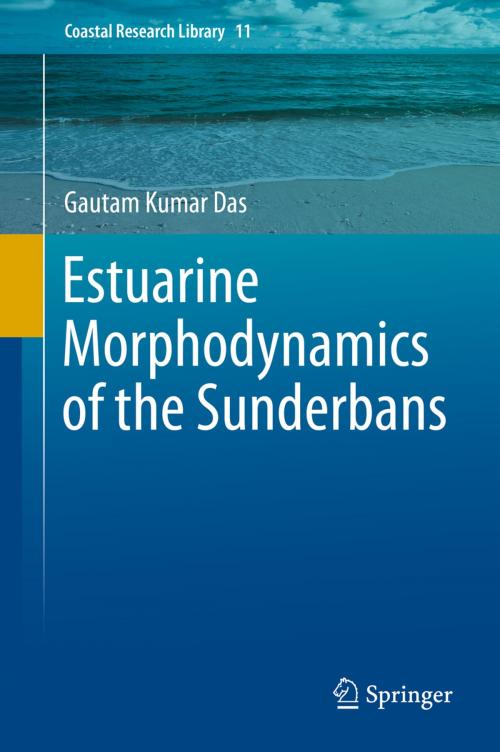Estuarine Morphodynamics of the Sunderbans
Nonfiction, Science & Nature, Science, Biological Sciences, Marine Biology, Earth Sciences, Geology| Author: | Gautam Kumar Das | ISBN: | 9783319113432 |
| Publisher: | Springer International Publishing | Publication: | October 21, 2014 |
| Imprint: | Springer | Language: | English |
| Author: | Gautam Kumar Das |
| ISBN: | 9783319113432 |
| Publisher: | Springer International Publishing |
| Publication: | October 21, 2014 |
| Imprint: | Springer |
| Language: | English |
This book is the outcome of rigorous and continuous research work done by the author over about three decades on the open ecosystem and dynamic environment of the estuarine Sunderbans. The objective of this work is to identify the field and factors changing gradually upon this active delta over the years, decades and centuries. The deltaic Sunderbans yet not mature enough, has been changing in its natural course with time. Further, anthropogenic interferences disturb the environments and accelerate degradation of nature of this fragile ecosystem simultaneously. Roles played by almost all the agents including man and environment and their involvement are identified for the changing environmental scenario of the Sunderbans.
The book is befitted for the researchers and students for the post graduate levels.
The Sunderbans, a UNESCO World Heritage Site covering parts of Bangladesh and the southern tip of Indian state of West Bengal, is a part of world's largest deltaic plain of fluvio-marine deposit formed by the Ganges and Brahmaputra at the confluence of the Bay of Bengal. It is the largest single block of tidal halophytic mangrove forest in the world, conspicuous for its great size and biodiversity. With an enormous network of channels and creeks, tidal inundation twice daily, Sunderbans mangroves wetland is a dynamic and complex ecosystem, which undergoes continuous processes of erosion and accretion. Natural processes like changes in local hydrology, sediment motion under wind, wave and tidal action, beach dynamics, regional and global processes like sea level rise as well as the impact of human interference in the form of reclamation of forest land, changes in land use patterns, coastal urbanizations etc are the lead factors for the changes in the environmental scenario of Sunderbans.
This book is the outcome of rigorous and continuous research work done by the author over about three decades on the open ecosystem and dynamic environment of the estuarine Sunderbans. The objective of this work is to identify the field and factors changing gradually upon this active delta over the years, decades and centuries. The deltaic Sunderbans yet not mature enough, has been changing in its natural course with time. Further, anthropogenic interferences disturb the environments and accelerate degradation of nature of this fragile ecosystem simultaneously. Roles played by almost all the agents including man and environment and their involvement are identified for the changing environmental scenario of the Sunderbans.
The book is befitted for the researchers and students for the post graduate levels.
The Sunderbans, a UNESCO World Heritage Site covering parts of Bangladesh and the southern tip of Indian state of West Bengal, is a part of world's largest deltaic plain of fluvio-marine deposit formed by the Ganges and Brahmaputra at the confluence of the Bay of Bengal. It is the largest single block of tidal halophytic mangrove forest in the world, conspicuous for its great size and biodiversity. With an enormous network of channels and creeks, tidal inundation twice daily, Sunderbans mangroves wetland is a dynamic and complex ecosystem, which undergoes continuous processes of erosion and accretion. Natural processes like changes in local hydrology, sediment motion under wind, wave and tidal action, beach dynamics, regional and global processes like sea level rise as well as the impact of human interference in the form of reclamation of forest land, changes in land use patterns, coastal urbanizations etc are the lead factors for the changes in the environmental scenario of Sunderbans.















